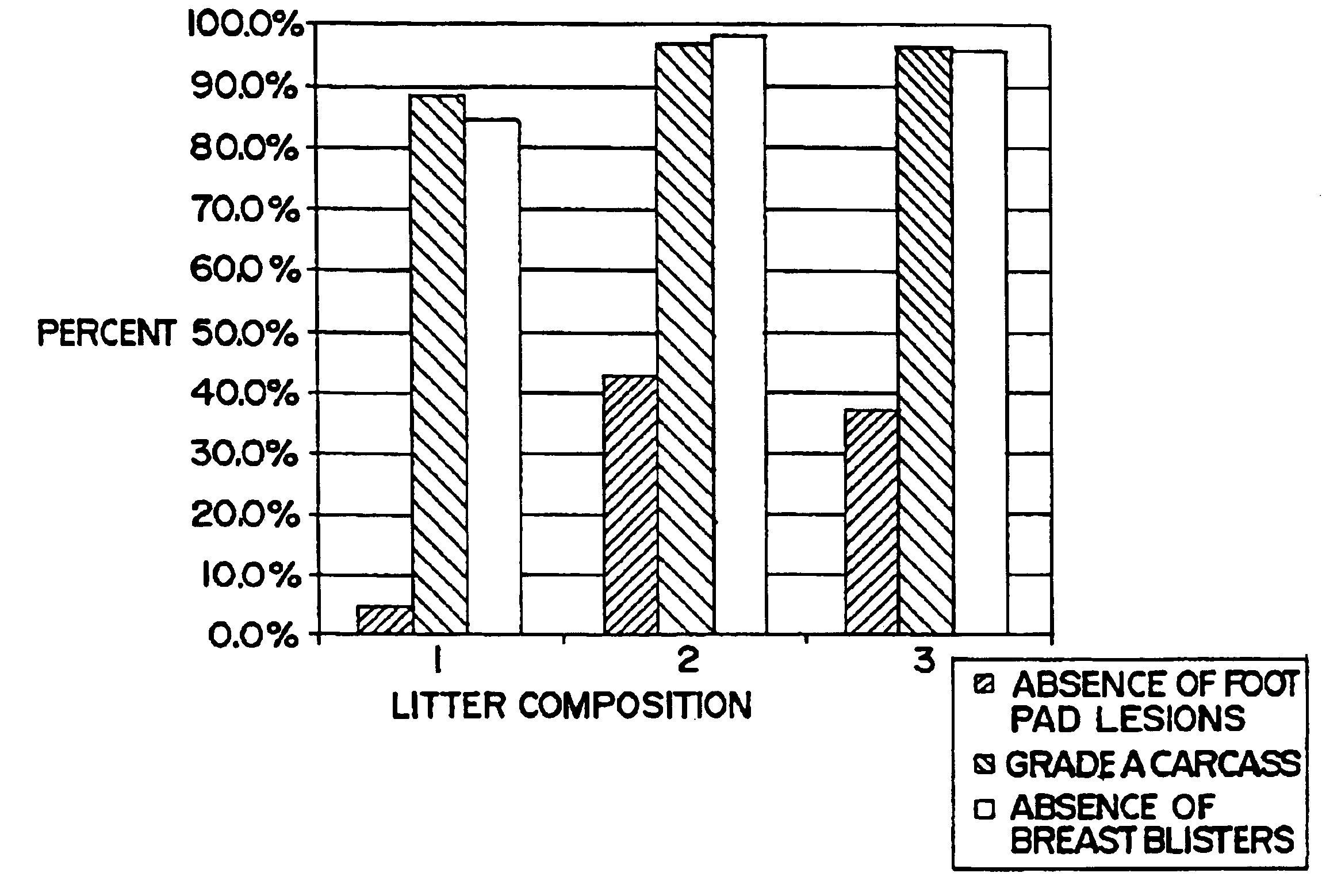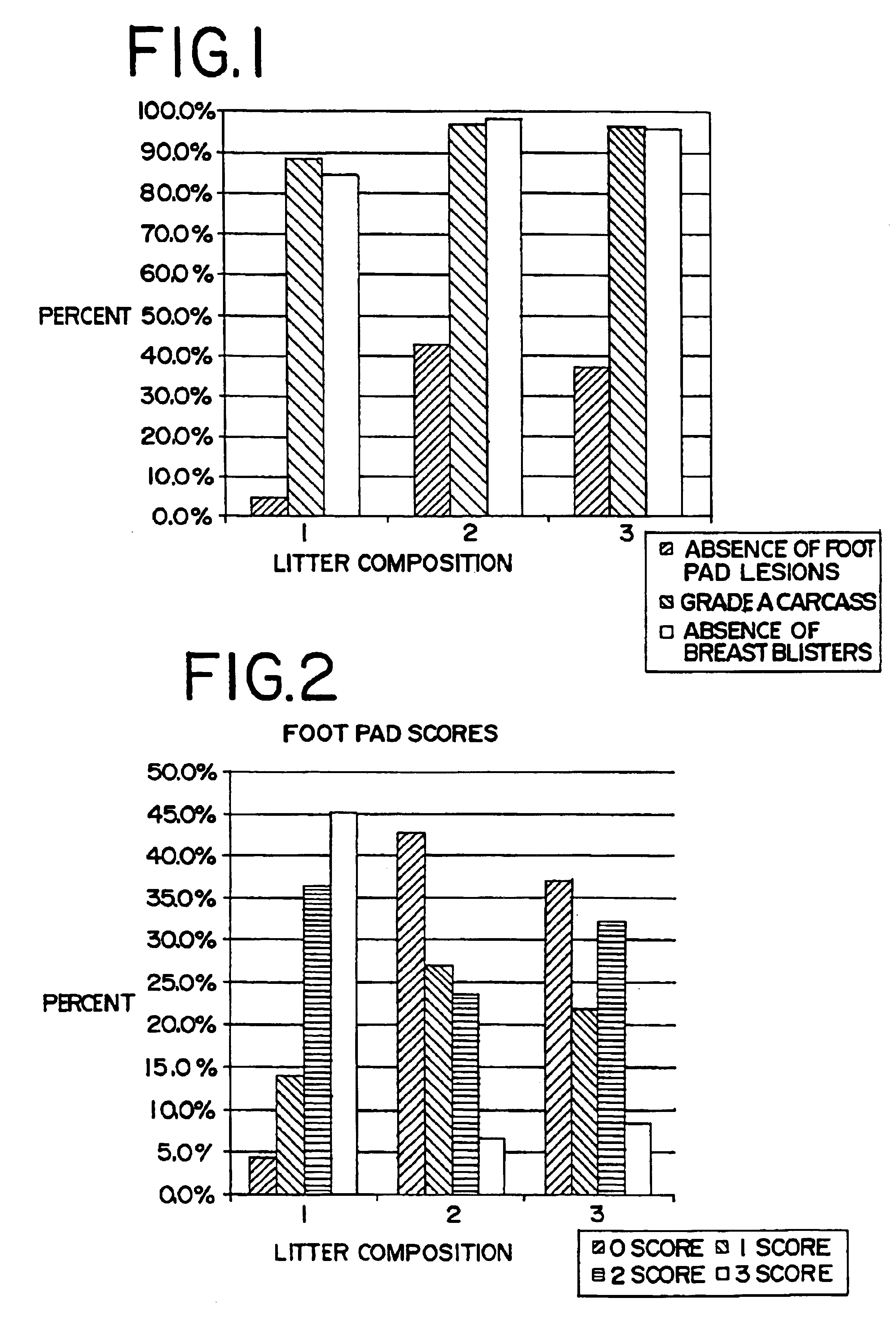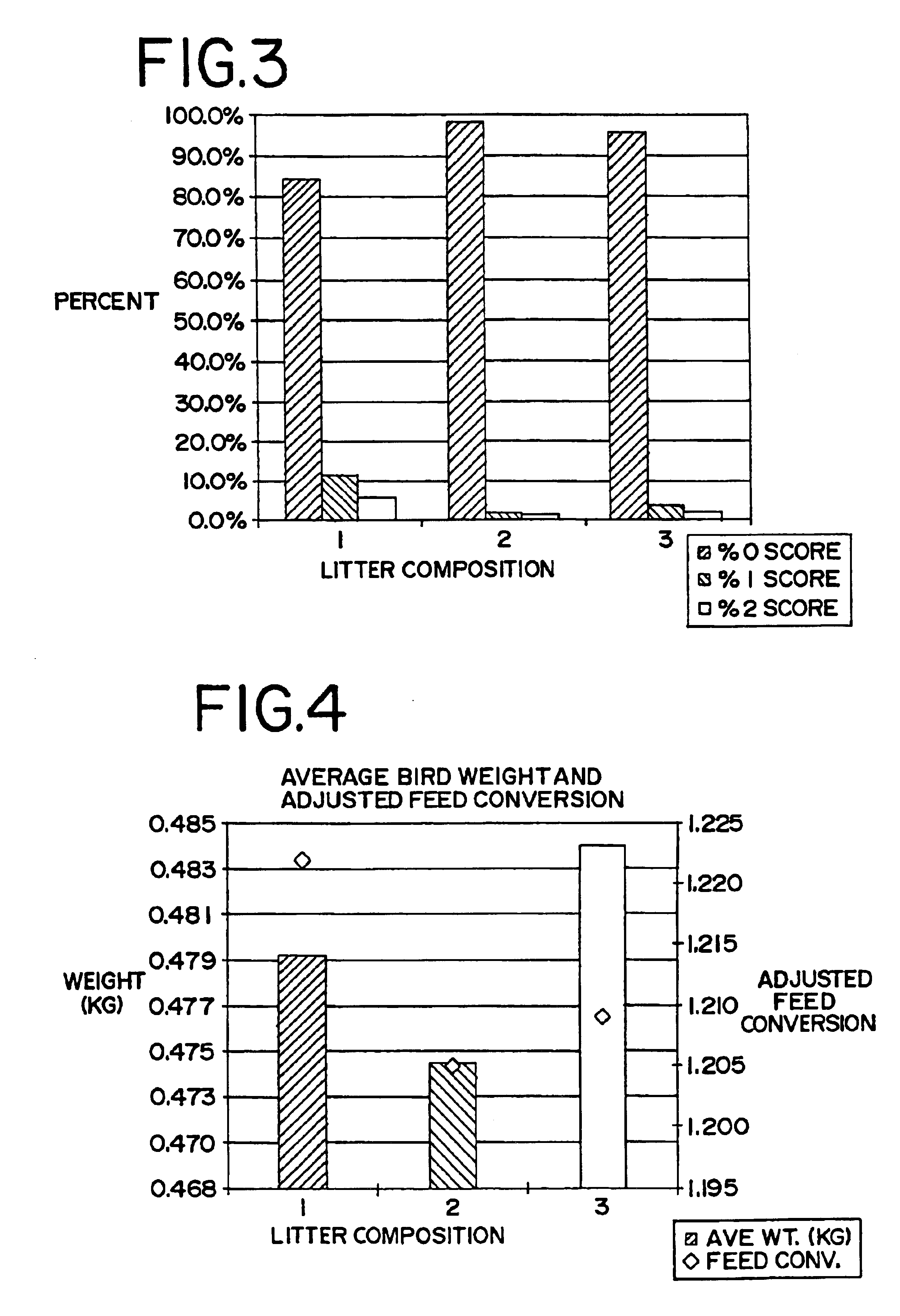Enhancing commercial poultry operations with litter having citrus byproduct
a technology of citrus byproducts and litter, which is applied in the field of decorative litter or bedding for commercial poultry raising facilities, can solve the problems of poor effect of traditional bedding litter materials, so as to improve commercial poultry raising operations and reduce poultry imperfections
- Summary
- Abstract
- Description
- Claims
- Application Information
AI Technical Summary
Benefits of technology
Problems solved by technology
Method used
Image
Examples
example 1
[0055]A study was conducted to evaluate bedding litters within pens of the type typically used in poultry raising facilities. The testing was carried out over a typical growing period for broiler chickens, while monitoring certain parameters of importance to the poultry industry. The testing protocol strove to maintain all environmental, feeding and other conditions consistent for all birds, with the exception of the bedding litter composition.
Study Protocol
[0056]In accordance with typical industry practices, the diets for each pen were as follows. For days 0 through 19, the birds were given a 22% starter diet in crumbled form, the balance of the feed being typical basal feed material. 4,000 pounds of feed containing a coccidiostat feed additive (salinomycin at 50 grams per ton) were prepared for early feeding. During days 19 through 35, a grower diet containing 20% pelleted grower feed formulation was combined with the basal feed containing the same feed additives and feed additive...
PUM
 Login to View More
Login to View More Abstract
Description
Claims
Application Information
 Login to View More
Login to View More - R&D
- Intellectual Property
- Life Sciences
- Materials
- Tech Scout
- Unparalleled Data Quality
- Higher Quality Content
- 60% Fewer Hallucinations
Browse by: Latest US Patents, China's latest patents, Technical Efficacy Thesaurus, Application Domain, Technology Topic, Popular Technical Reports.
© 2025 PatSnap. All rights reserved.Legal|Privacy policy|Modern Slavery Act Transparency Statement|Sitemap|About US| Contact US: help@patsnap.com



